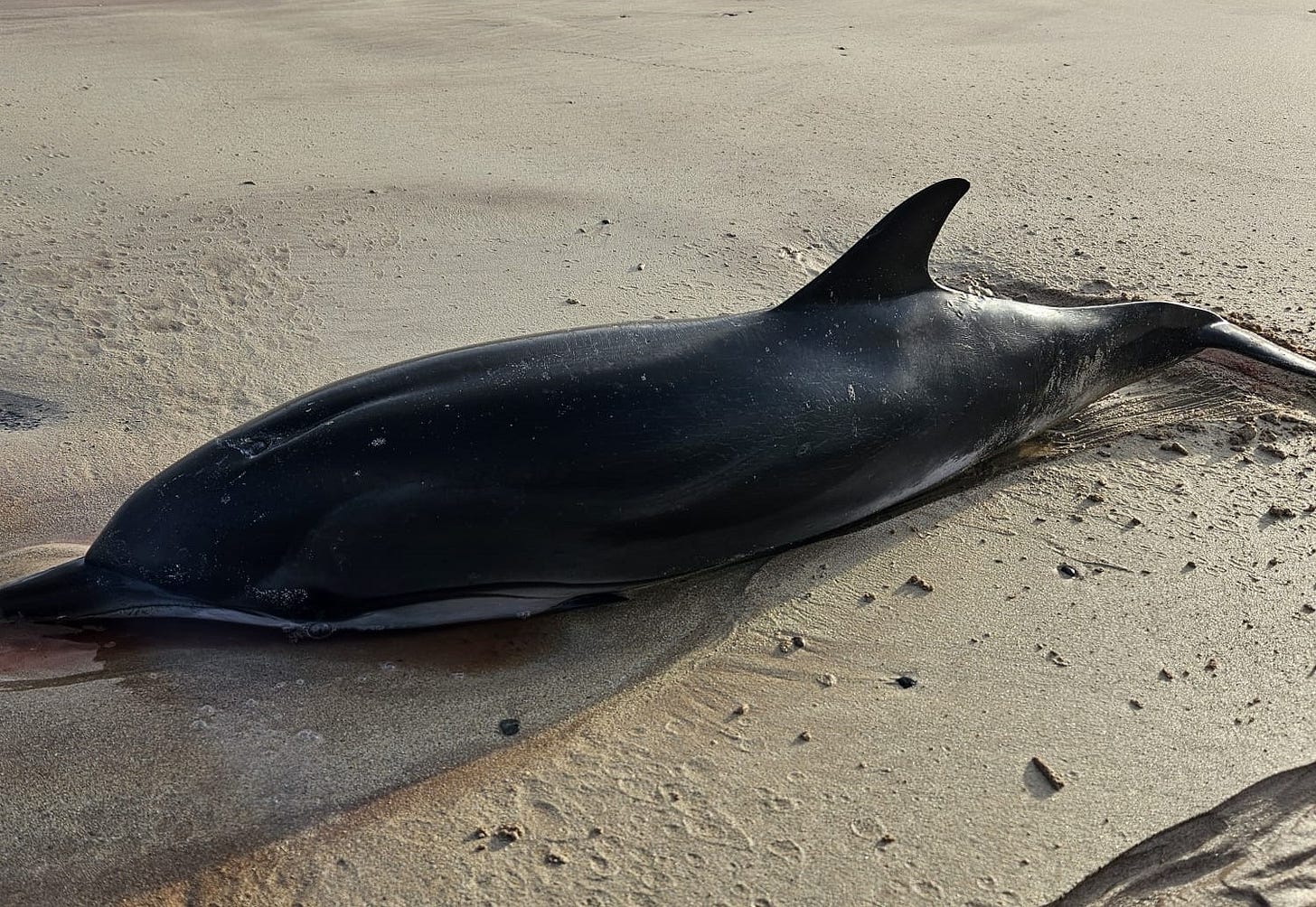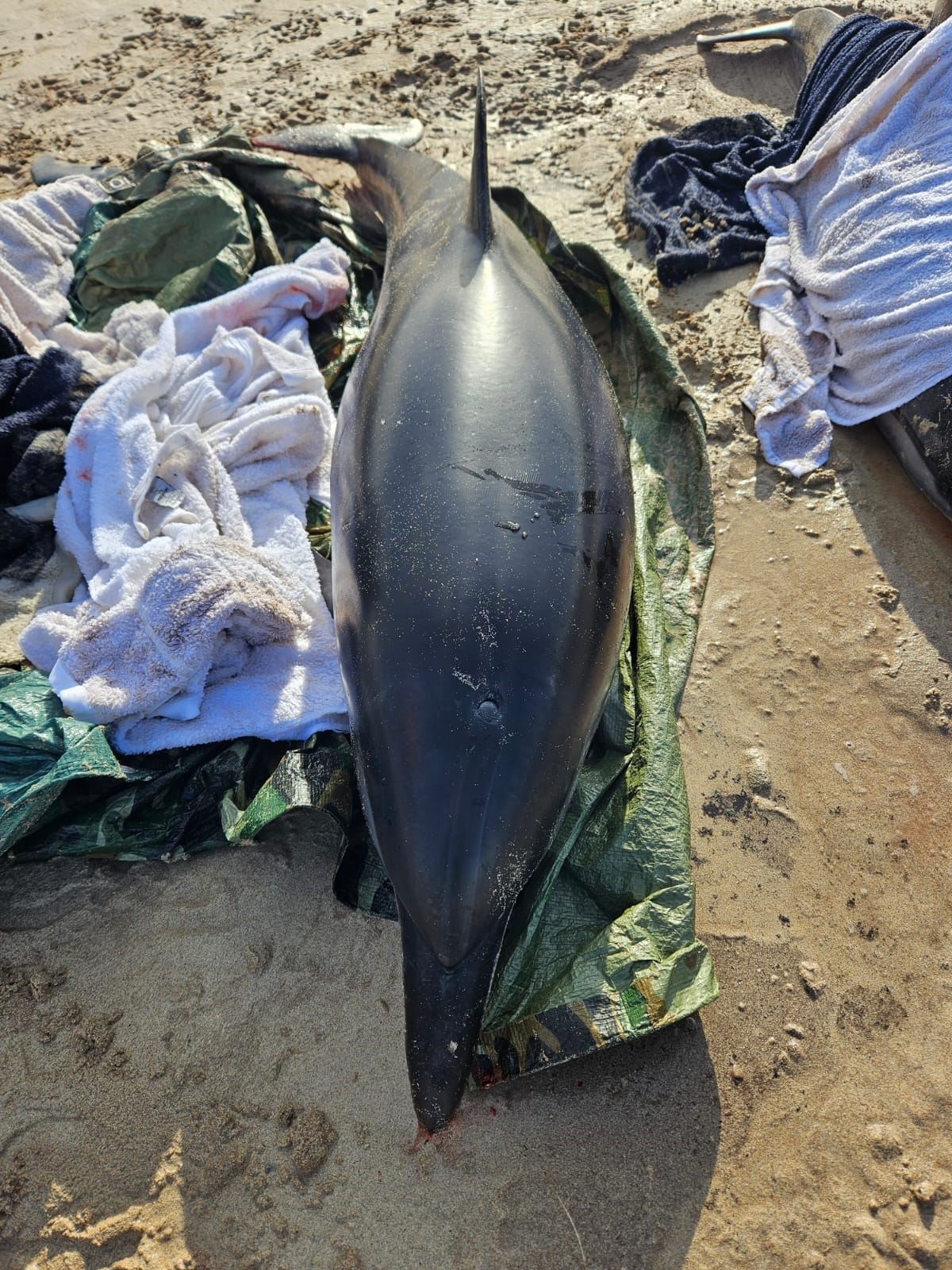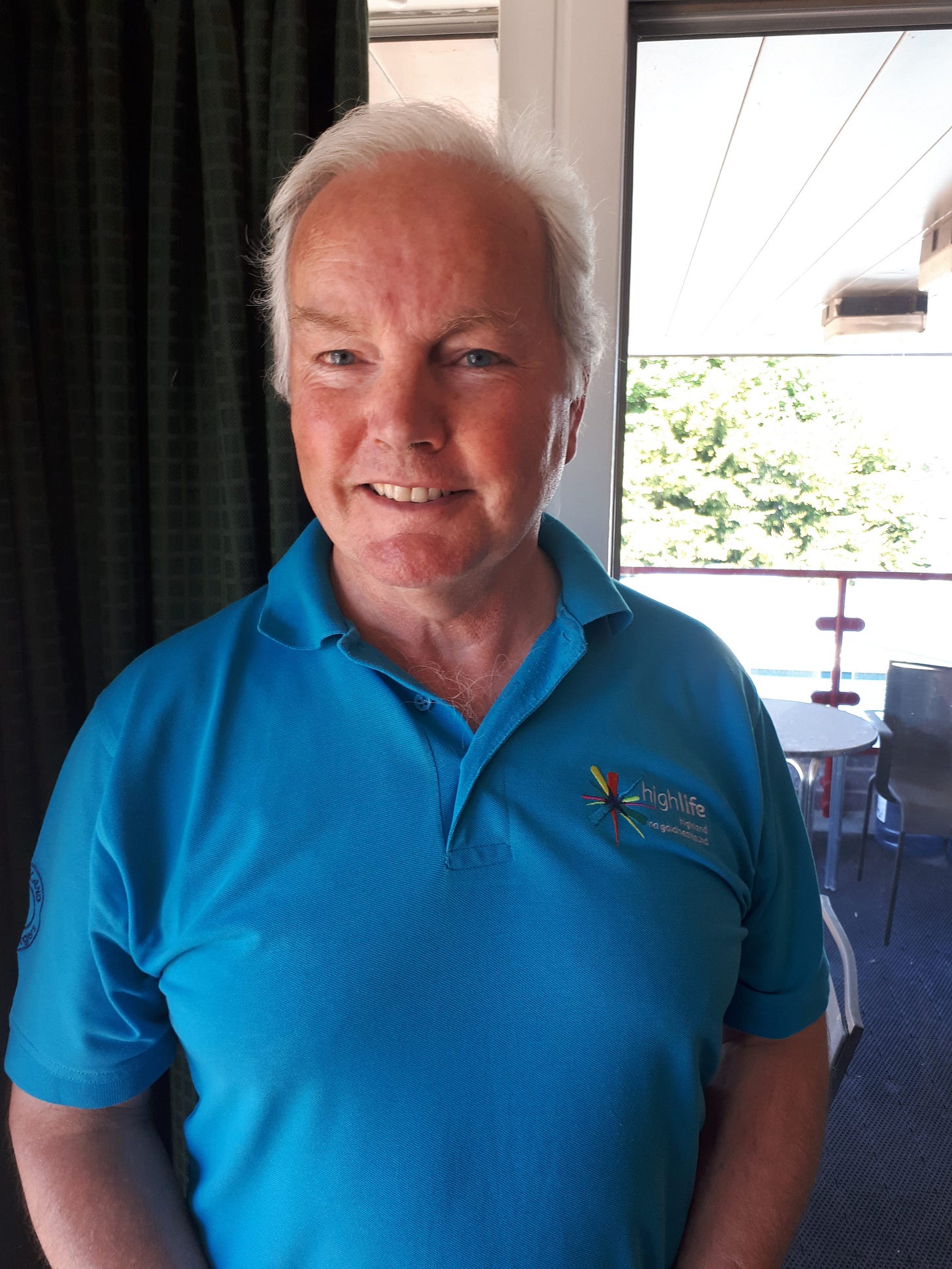Where the Dolphins Lie
Donald discusses the frontline of strandings: Rangers, Rescue, and Research
Dolphins are often seen as the joyful acrobats of the sea, sleek, powerful, and full of life. To watch them in their natural element is to glimpse a world of grace and playfulness beneath the waves. Yet for many of us who live close to the shore, encounters with these remarkable creatures are tinged with sadness. All too often, the dolphins we meet are those that have come to grief, washed ashore by forces beyond our ken.
I am sad to tell you that most of my experience of spotting dolphins or whales is of this ilk, struggling on the beach or lying still and prostrate, often lifeless. So it was recently on two separate occasions, both with striped dolphins as the casualties.
Durness appears to have an attraction for stranding cetaceans, certainly to me, but the remarkable stranded map of the marine animal stranding scheme [SMASS] reveals widespread strandings, far more than most people might realise.
The Scottish Marine Animal Stranding Scheme is the dedicated research and reporting scheme for stranded cetaceans, pinnipeds, marine turtles, and large sharks in Scotland. The project aims to provide a systematic and coordinated approach to the surveillance of Scotland’s marine species by collating, analysing and reporting data of all whales, dolphins and porpoises (collectively known as cetaceans), seals, marine turtles and basking sharks that strand on the Scottish coastline. Investigation of stranded marine animals can yield substantial information on the health and ecology of these fascinating but often little understood species, while also helping to highlight some of the conservation issues they may face.
On the first occasion at Balnakeil, I was not present for the immediate incident in which four striped dolphins stranded. Two local members of the British Divers Marine Life Rescue [BDMLR] were present to attempt a rescue but sadly one dolphin was already dead, and another was badly injured and was humanely put down. The two remaining were larger, probably adults, looked in better condition and eventually with the help of the coast guard and others they were persuaded to return to deeper waters. They were not seen again, which is a positive. In the meantime, the HQ of the BDMLR had been contacted, they had then contacted the SMASS team, and two marine vets were on their way to Durness to pick up the two casualties for sampling research.
When I returned to Durness and heard about the incident, I sped off to find out if I could be of any use, but everything was quiet, the SMASS team of two had recently come and gone with the two bodies for necropsy.
I walked out further along the beach just to check in case the two which had been put back out had come in again, which often happens, but there was no sign.
Heading back, I was stopped by a sharp eyed local who mentioned that he thought he had seen two more on a different part of the beach, so I went to look there. Sadly, I eventually spotted two more dolphin corpses stuck on the rocks, dead and damaged.
I telephoned the SMASS number [some within the High Life Highland Ranger team are trained as BDMLR members and so have contact details], I caught the two almost halfway back to Inverness and heard them sigh as I gave them the news that there were two more.
“How long ago was that?” Dr Brownlow asked.
“Five minutes ago,” I replied.
Amazingly, dedicatedly, they were turning around to come back for the others. It is unusual for striped dolphins to strand and even more so in multiple numbers, so to have more for a necropsy, could provide important information.
It was now beginning to get dark; the tide was incoming and despite not being very large the dolphins were heavy, but I managed to secure assistance from Murray, a young lad with a keen interest in wildlife. We hauled them up to the beach where they would be more accessible, especially in the dark. It is important to note that we took appropriate precautions using a tarpaulin and gloves, not actually touching the animals as some may be carrying the bacteria of transmittable zoonoses.
The team arrived in the dark, we assisted, and the bodies were loaded on and carried off for studies, it was a very sad task - but it might be useful. We await the results of the pathology tests.
Not the end of our story sadly, as two weeks later someone sent a photograph of another striped dolphin lying dead at the far end of the same beach, so I went to look and found this one had been dead for some time, past any sampling condition. I took measurements and photographs and sent them to the laboratory, I had feared that it would be one of those returned to the sea, however my measurements were different to these two, which was somewhat of a relief. This poor soul I tied with a natural green twine in case it should surface again and be reported somewhere else. So far it has not.
Striped dolphins are among the most abundant and widespread dolphins in the world. They prefer deep tropical to warm temperate oceanic waters, and are attracted to upwelling areas, where deep, cold, nutrient-rich water rises toward the surface, and convergence zones, where ocean currents meet. They are usually found in tight, cohesive groups of about 25 to 100 individuals and have been observed breaching, jumping, and leaping over 20 feet above the surface of the water.
Interestingly and most synchronously, just after writing this piece I drove home, my wife was standing at the window pointing out to sea. Following her gaze I saw the whale blows, two minke whales in the bay swimming around and diving. It was wonderful to watch, they seemed to be in feeding mode and stayed around for about half an hour, a very fitting end to the workday!

If you would like more details, or are interested in collaborating or reporting a stranding, please get in touch with SMASS via reports@strandings.org.
Donald Mitchell is a High Life Highland Countryside Ranger, a keen observer of nature and wildlife, he dedicates his time to documenting and sharing insights about the natural habitats in North West Sutherland. With a particular interest in marine life, he aims to help others gain a deeper understanding and respect for the delicate balance of our ecosystem.
Nocturnal Dolphins
Dolphins [Tursiops truncates], , especially bottlenose dolphins, frequently visit the Scottish Highlands, with the best sightings from spring to autumn (April to October). They're often seen in the Moray Firth and around the Black Isle, up along the west coast and at places like Chanonry Point which offer excellent land-…
Ghosts of the West Coast
Orcinus orca are otherwise known as the Orca or Killer whale, not because they are a danger to humans (despite recent events in the Mediterranean), but because they’re killers of whales. In my opinion they are probably the most charismatic inhabitants of the sea by far. They are the largest members of the dolphin family and easily recognised by their bl…












Thanks, very interesting - just been clicking around on the SMASS map. I have also learned the difference between autopsy and necropsy!